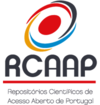Mobile applications as pedagogical resources: Design and learning
DOI:
https://doi.org/10.21814/h2d.2509Keywords:
pedagogical resources, mobile apps, language learning, mobile learningAbstract
(Re)thinking pedagogical resources is a constant task for every education professional, either because it changes students, or updates the classes content or perhaps the school context. Whenever one of those elements destabilizes the system totality, a new balance is required, which impels the teachers, the planning agents and designers, to seek solutions that bring a new stability. The school, due to its social representativeness, naturally reflects changes at all levels in society. In this sense, Digital Information and Communication Technologies have become a relevant element of influence in the school context. Mainly because of the access expansion to different types of mobile devices – notebooks, tablets or smartphones – these technologies approach students and teachers in a consistent and concrete way, inside and outside the school. Thus, in this work we focus on mobile applications as an educational resource for use in class, analyzing them as a potential for innovation and motivation for learning. For this, we have developed a bibliographic research, presenting a current overview of the design of educational applications, with the intention of understanding the paths and options that teachers can envision in their practices.
Downloads
References
Almeida, M. E. B., & Valente, J. A. (2011). Tecnologias e Currículo: trajetórias convergentes ou divergentes? Paulus.
Celaya, J. (2014). Apps Educativas: Nuevas formas de acceder al conocimiento. Dosdoce.
Crescenzi-Lanna, L., & Grané-Oró, M. (2016). Análisis del diseño interactivo de las mejores apps educativas para niños de cero a ocho años. Revista Comunicar, XXIV(46), 77-85. http://dx.doi.org/10.3916/C46-2016-08
Gardner, H., & Davis, K. (2014). La generación APP. Cómo los jóvenes gestionan su identidad, su privacidad y su imaginación en el mundo digital. Paidós.
Grané, M. (2012). El disseny interactiu a la xarxa. Universitat de Barcelona.
McClure, E., Vaala, S., & Spiewak Toub, T. (2017). Discovering kids’ apps: Do family strategies vary by income? The Joan Ganz Cooney Center at Sesame Workshop. http://joanganzcooneycenter.org/wp-content/uploads/2017/06/jgcc_discoveringkidsapps.pdf
Medeiros, G. A.S., Bergmann, J. C. F., Gresse von Wangenheim, C. (2020). Práticas Pedagógicas como Desenvolvimento de Aplicativos para Dispositivos Móveis por Estudantes da Educação Básica. Revista Textura, 22(49), 99-119. https://doi.org/10.17648/textura-2358-0801-22-5052
Nunes, G. M., & Bergmann, J. C. F. (2019). Elaboração de Critérios de Análise para Aplicativos de Línguas Estrangeiras como Recursos Didáticos ao Ensino Formal. Revista Trama, 15(35), 70-78,
Pérez Gómez, Á. I. (2014). Educação na Era Digital: A escola educativa. Penso.
Rogers, Y., Sharp, H., & Preece, J. (2013). Design de Interação:Além da Interação Humano-Computador. Bookman.
Santaella, L. (2013). Comunicação ubíqua: repercussões na cultura e na educação. Paulus.
Sonego, A. H. S., & Behar, P. A. (2015). M-Learning: Reflexões e perspectivas com o uso de aplicativos educacionais. In Sánchez, J. (Ed.), Nuevas Ideas en Informática Educativa. XX Conferência Internacional de sobre Informática na Educação (pp. 521-526). Universidade do Chile. http://www.tise.cl/volumen11/TISE2015/521-526.pdf
West, M., & Vosloo, S. (2013). Policy Guidelines for Mobile Learning. UNESCO. http://unesdoc.unesco.org/images/0021/002196/219641E.pdf
Vázquez-Cano, E., & Sevillano, M. L. (Eds.) (2019). Dispositivos Digitales Móviles en Educación. El aprendizaje ubicuo. Narcea.
Downloads
Published
How to Cite
Issue
Section
License
Copyright (c) 2020 H2D|Digital Humanities Journal

This work is licensed under a Creative Commons Attribution 4.0 International License.






